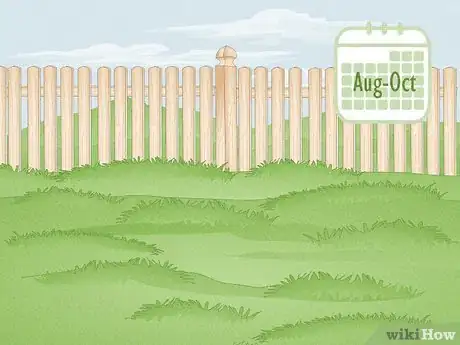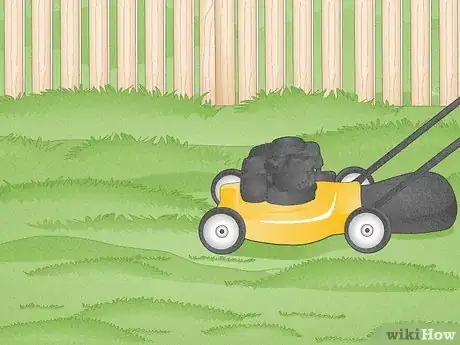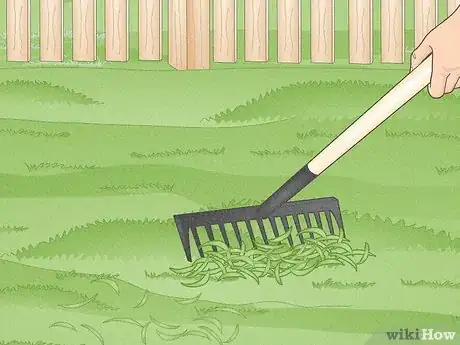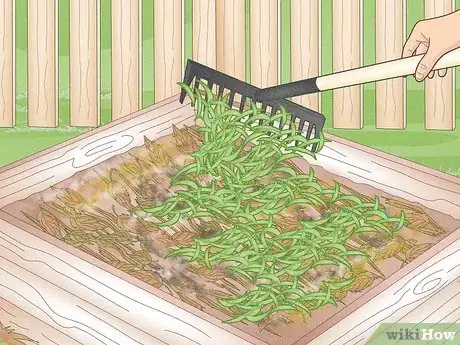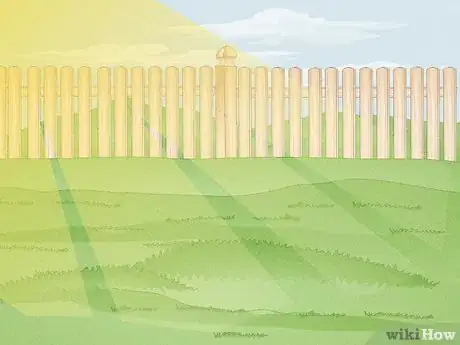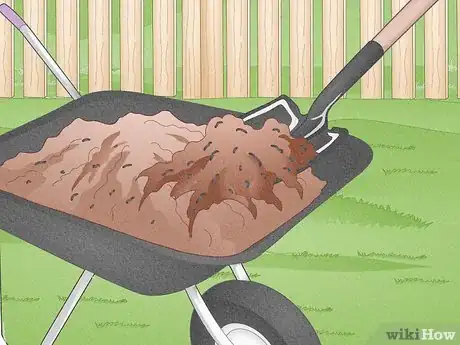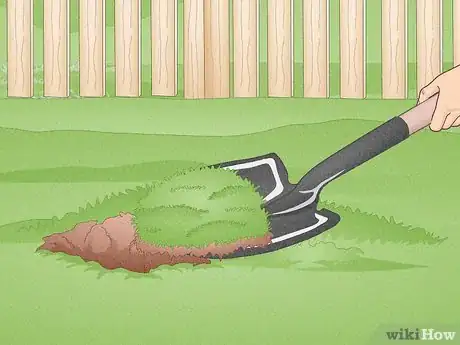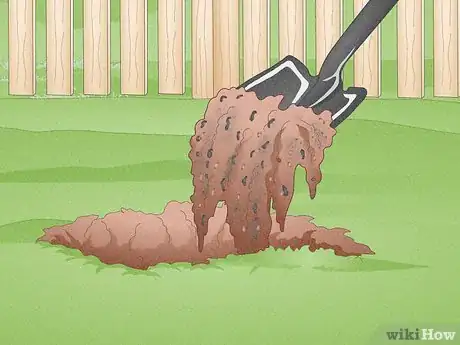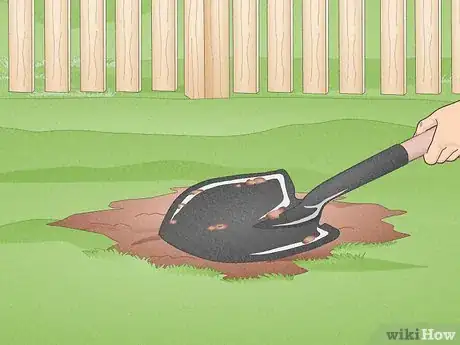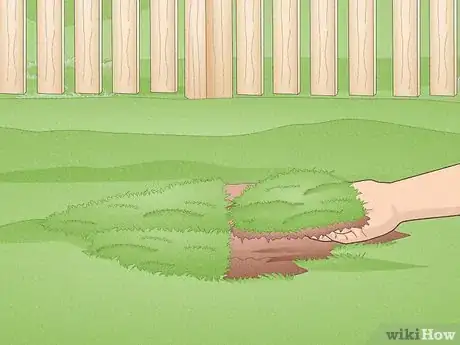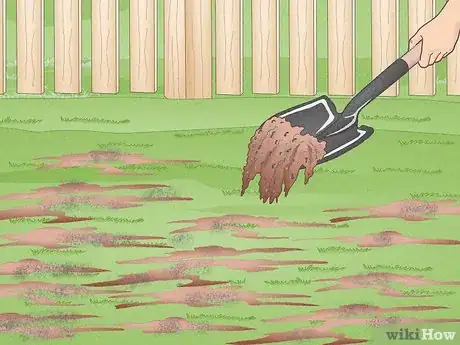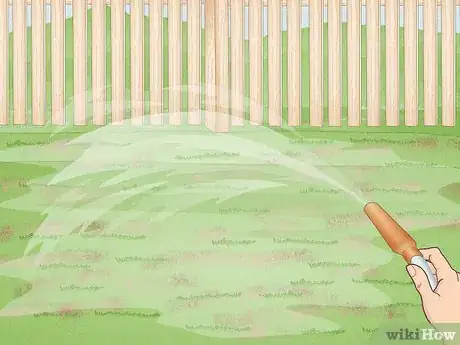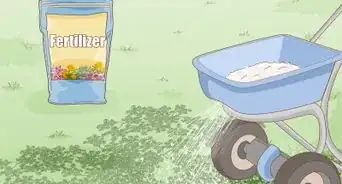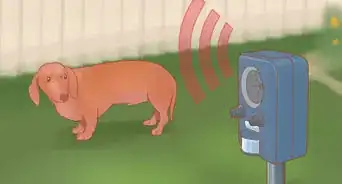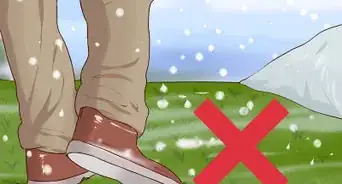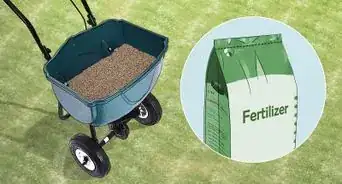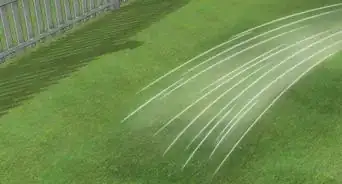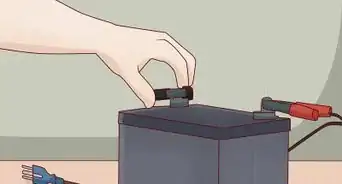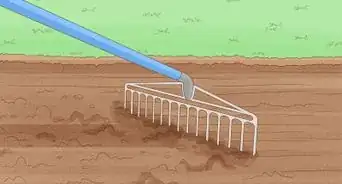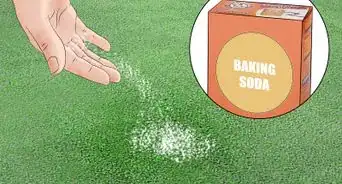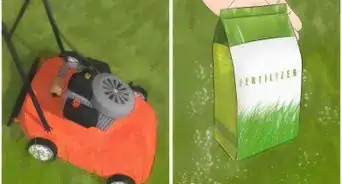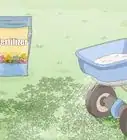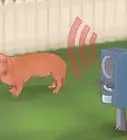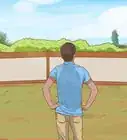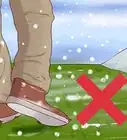This article was co-authored by Keith Souza. Keith Souza is a Home Improvement Specialist and the Owner of Vaulted Hammer Handyman Services. He specializes in home repair, home automation, and yard maintenance. Keith holds an AAS in Electronics Technology from Heald College.
This article has been viewed 5,624 times.
Let’s face it: nobody likes a lumpy lawn. Luckily, it doesn’t have to be that way! While leveling a sloping yard can be a challenge, if you’re dealing with bumps, low spots, or divots, you don’t even need any fancy or expensive equipment to level out your lawn. With a few simple tools and a little bit of elbow grease, you can easily remediate your yard so it looks even and pristine. Start by dethatching, which will remove debris and dead growth in your grass, which can make it look lumpy. Then, you can topdress and fill any sunken spots or divots. Now, get to it!
Steps
Dethatching Your Lawn
-
1Wait until late August to early October for cool-season lawns. Dethatching can take a toll on your lawn, so if you have cool-season grass, wait until it’s growing vigorously so it can recover. If you have warm-season grass, wait until late spring or early summer to dethatch your lawn.[1]
- Most cool-season grasses are turf grasses such as perennial ryegrass, annual ryegrass, tall fescue, and bluegrass.[2]
- If you aren’t sure what type of grass you have, watch how it grows. If it mostly grows in the spring, then it’s likely a cool-season grass, whereas warm-season grasses put most of the energy into growing in the summer months.
-
2Mow your lawn short. Take your lawnmower and set it so it’ll cut short, but not so short that it exposes the dirt or the stems of the grass. Run your mower over your lawn so it’s cut evenly before you start dethatching.[3] [4]
- If you cut your grass too short, it can cause it to dry out affect how well it recovers after you dethatch your lawn. Try not to cut it shorter than 1 inch (2.5 cm).
- Mowing your lawn also helps expose the thatch so you can more easily see and remove it.
Advertisement -
3Run a thatch rake over the surface of your lawn. A thatching rake has tines that are specially designed to catch and remove thatch from your grass. Run it over any areas with clumps of thatch and dead grass. Pull up the thatch and collect it all into a pile as you work your way across your yard.[5]
- It may take several passes with the thatch rake to remove all of the thatch stuck to your grass.
- If you have a ton of thatch or you have a really large lawn, you can use a thatching machine, also known as a power rake, to pull up the thatch. You can rent them from your local home improvement or hardware store.
-
4Compost or dispose of the thatching debris. Dethatching your lawn can produce a ton of dead grass and debris. Add it all to a compost pile if you have one or collect it all into garbage bags and dispose of it so your lawn is free and clear of any organic waste.[6]
- Some cities collect yard waste for composting! Check to see if your city has a program and find out what you need to do to donate.
Topdressing Your Lawn
-
1Wait for a dry day to topdress your lawn. It’s much easier to add a topdressing mixture when the soil isn’t damp or full of water. Choose a day where it hasn’t rained for a few days beforehand so your lawn is nice and dry.[7]
-
2Mix 2 parts sand, 2 parts topsoil, and 1 part compost. Use a large container such as a bucket or pail, or a wheelbarrow. Add all of your ingredients together and mix them well to form your topdressing mixture.[8]
- All 3 ingredients are really important! The sand helps aerate the topsoil so it won’t clump up and choke out the grass beneath, and the compost provides steady nutrition to help the areas you topdress recover.
- You can find sand, topsoil, and compost at your local garden supply store or home improvement store.
-
3Dig up the grass in the sunken parts of your lawn with a shovel. Take the end of your shovel and slide it about 2–3 inches (5.1–7.6 cm) into the soil so you get beneath the roots of the grass. Pry up and remove the grass so the soil beneath is exposed and easier to fill.[9]
- Remove the grass from every low spot you plan to fill. Don’t worry, it’ll grow back within a few weeks.
- Even small divots will be easier to topdress if you remove the grass.
- Set the grass aside so you can replace it later.
-
4Scoop out 2-3 shovelfuls of the mixture into your low spots. Take a big scoop of your topdressing mixture and add it to a low spot. Add 2-3 more for each low spot in your yard. Your lawn will look like it has a bunch of anthills when you’re finished.[10]
- Don’t worry about smoothing out the mixture yet.
- If you run out of the topdressing mix, just make some more!
-
5Spread the mixture with the backside of a shovel. Use the flat backside of your shovel to distribute the topdressing mixture so it looks even with the surrounding soil. Pat the mixture down so it’s flat and level.[11]
- If a low spot is still uneven, add more of the mixture so it’s level with the surrounding area.
-
6Replace the grass you removed. Carefully pick up the patches of grass and set them back on top of the topdressing mixture. Don’t worry if it looks slightly uneven at first. It’ll grow back into place once the roots get reestablished.[12]
- Using the grass you removed from the sunken spots will look more natural than replacing them with sod or turf grass.
-
7Apply the rest of the mixture evenly across your lawn. Take your shovel and disperse the topdressing mixture over your entire yard. Add enough to cover your whole yard and form an even layer about .25–.5 inches (0.64–1.27 cm) thick, which will help even out your whole lawn.[13]
- Be careful not to overdo it. If you add too much of the mix it could choke out your grass.
-
8Water your lawn well when you’re finished. Take a garden hose, sprinkler, or watering can and water your entire yard deeply. It’ll help settle the mix and drive nutrients from the compost into the soil, which will help your grass grow and recover.[14]
Expert Q&A
-
QuestionHow do you level a lawn easily?
 Jeremy YamaguchiJeremy Yamaguchi is a Lawn Care Specialist and the Founder/CEO of Lawn Love, a digital marketplace for lawn care and gardening services. Jeremy provides instant satellite quotes and can coordinate service from a smartphone or web browser. The company has raised funding from notable investors like Y Combinator, Joe Montana, Alexis Ohanian, Barbara Corcoran and others.
Jeremy YamaguchiJeremy Yamaguchi is a Lawn Care Specialist and the Founder/CEO of Lawn Love, a digital marketplace for lawn care and gardening services. Jeremy provides instant satellite quotes and can coordinate service from a smartphone or web browser. The company has raised funding from notable investors like Y Combinator, Joe Montana, Alexis Ohanian, Barbara Corcoran and others.
Lawn Care Specialist The first and most important step is to determine why your lawn is bumpy, as it can be a result of drainage problems or even broken irrigation pipes causing erosion. I would contact an expert to help get to the root of the issue.
The first and most important step is to determine why your lawn is bumpy, as it can be a result of drainage problems or even broken irrigation pipes causing erosion. I would contact an expert to help get to the root of the issue.
Things You’ll Need
- Lawnmower
- Shovel
- Thatch rake
- Sand
- Topsoil
- Compost
- Bucket, pail, or wheelbarrow
References
- ↑ https://www.bhg.com/gardening/yard/lawn-care/lawn-dethatching/
- ↑ https://www.gardeningknowhow.com/lawn-care/lgen/what-is-cool-grass.htm
- ↑ https://www.bobvila.com/articles/how-to-level-a-yard/
- ↑ Keith Souza. Home Improvement Specialist. Expert Interview. 20 August 2021.
- ↑ https://www.bobvila.com/articles/how-to-level-a-yard/
- ↑ https://www.bhg.com/gardening/yard/lawn-care/lawn-dethatching/
- ↑ https://www.nature-and-garden.com/gardening/topdress-lawn.html
- ↑ https://www.bobvila.com/articles/how-to-level-a-yard/
- ↑ https://www.bobvila.com/articles/how-to-level-a-yard/
- ↑ https://todayshomeowner.com/top-dressing-to-improve-the-soil-in-your-lawn/
- ↑ https://todayshomeowner.com/top-dressing-to-improve-the-soil-in-your-lawn/
- ↑ https://www.bobvila.com/articles/how-to-level-a-yard/
- ↑ https://www.bobvila.com/articles/how-to-level-a-yard/
- ↑ https://todayshomeowner.com/top-dressing-to-improve-the-soil-in-your-lawn/
